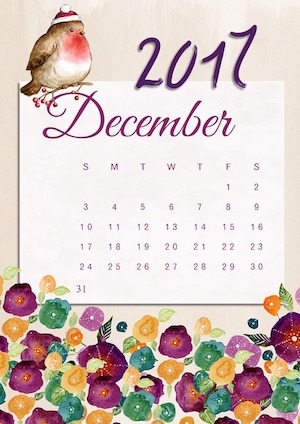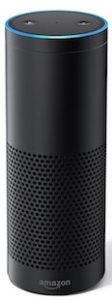 Happy new year! January is the month of new beginnings and a perfect time to strategize about projects that will boost your business prosperity. Here are five ideas to get you thinking about new beginnings for your business in 2018.
Happy new year! January is the month of new beginnings and a perfect time to strategize about projects that will boost your business prosperity. Here are five ideas to get you thinking about new beginnings for your business in 2018.
1. Learn new technology.
Every year, tens of thousands of new online software applications are invented that will save us time and money. Learning at least one new app will keep us sharp and hopefully improve our business. There are many to choose from, and one way to narrow it down is to find one that will help you do your job better.
Look for an app that supports your administrative work, such as a new phone system, video conferencing, scheduling, cloud storage, shipping, document management, or data entry automation. Or you might have a need for apps in marketing and sales, such as social media, customer relationship managers, email list management, or web applications. If you’re not sure where to look, ask your friends what has saved them the most time.
2. Upgrade your accounting system.
If your accounting system is not updated to the current version, it may be time to perform the upgrade. Check with us for advice on the current version and any new features that you can benefit from.
3. Develop your 2018 prosperity plan.
The word “budget” has somewhat of a negative connotation, but a prosperity plan sounds like fun. They are the same, of course, and the idea is to determine what goals you want to reach so that you have a clear path to making your desired prosperity a reality.
4. Create a theme or mantra.
Want to stay more focused in 2018? A theme or mantra can remind you to stay on track with a particular project or goal. Brainstorm a phrase that will guide you in 2018. Here are some examples:
- Customer service excellence
- More me-time
- Enthusiastic, engaged employees
- Expanding digital presence
- Going green
- A prosperous new product line
5. Delegate something that isn’t getting done.
One way to feel amazingly rejuvenated and re-energized about your business is to give someone an item that’s been on your to-do list for far too long. It magically gets done right before your eyes!
We’re wishing you a most prosperous and happy new year.
 Mission statements are not just for large corporations. As an owner of a small business, you can benefit from going through the exercise of writing your mission statement. It can not only re-connect you with your “why,” it can also communicate an important part of your business to all of your stakeholders.
Mission statements are not just for large corporations. As an owner of a small business, you can benefit from going through the exercise of writing your mission statement. It can not only re-connect you with your “why,” it can also communicate an important part of your business to all of your stakeholders. Year-end is just around the corner, and that means a couple of administrative tasks are necessary to take care of bookkeeping and tax chores. Here are a couple of tips to make year-end go smoother.
Year-end is just around the corner, and that means a couple of administrative tasks are necessary to take care of bookkeeping and tax chores. Here are a couple of tips to make year-end go smoother.
 Your “Chart of Accounts” is the list of accounts in your accounting software. The accounts are listed in your reports, and the totals allow you to determine how much you’ve spent, made, own, or owe depending on the type of account.
Your “Chart of Accounts” is the list of accounts in your accounting software. The accounts are listed in your reports, and the totals allow you to determine how much you’ve spent, made, own, or owe depending on the type of account. The security breach at Equifax a few months ago left many people thinking once again about identity theft. The best thing is to do everything you can to prevent it from happening to you. Here are a few tips to help you reduce your risk of being a victim of identity theft as well as how to reduce the damage from security breaches of your personal data from sources you can’t control.
The security breach at Equifax a few months ago left many people thinking once again about identity theft. The best thing is to do everything you can to prevent it from happening to you. Here are a few tips to help you reduce your risk of being a victim of identity theft as well as how to reduce the damage from security breaches of your personal data from sources you can’t control. If you spend a lot of time online using a web browser to view web sites or to work in online applications, then you may benefit from knowing these wonderful features about your browser software.
If you spend a lot of time online using a web browser to view web sites or to work in online applications, then you may benefit from knowing these wonderful features about your browser software. Would you call yourself a procrastinator? If so, you’re not alone, and with our to-do-lists growing daily, the percentage of people who procrastinate chronically has increased over the last few decades.
Would you call yourself a procrastinator? If so, you’re not alone, and with our to-do-lists growing daily, the percentage of people who procrastinate chronically has increased over the last few decades. One of the many online marketing options available for businesses is blogging. A blog can act as a company’s daily newspaper, letting customers and followers know the latest news about what’s happening. It can also be a wonderful revenue-generator.
One of the many online marketing options available for businesses is blogging. A blog can act as a company’s daily newspaper, letting customers and followers know the latest news about what’s happening. It can also be a wonderful revenue-generator. Did you ever want a secretary that could answer questions all day? While Amazon’s Echo product can’t fetch coffee, it can perform all sorts of digital tasks that come up in daily life at work and at home.
Did you ever want a secretary that could answer questions all day? While Amazon’s Echo product can’t fetch coffee, it can perform all sorts of digital tasks that come up in daily life at work and at home.

.jpg)



